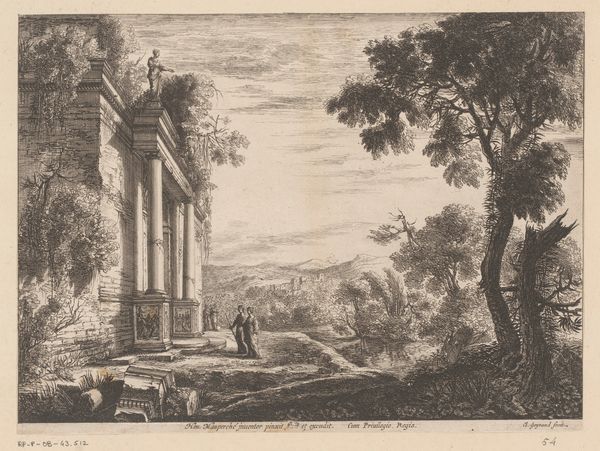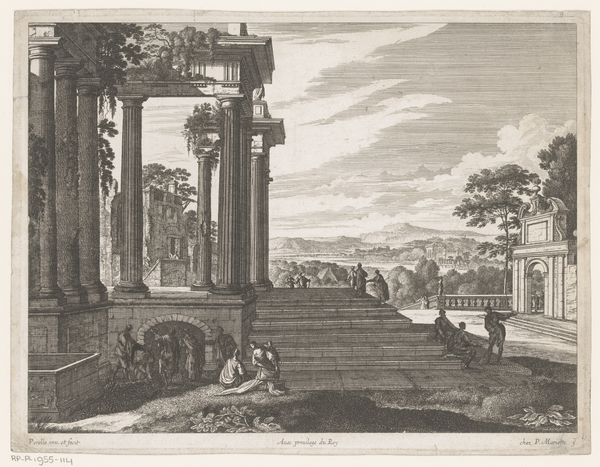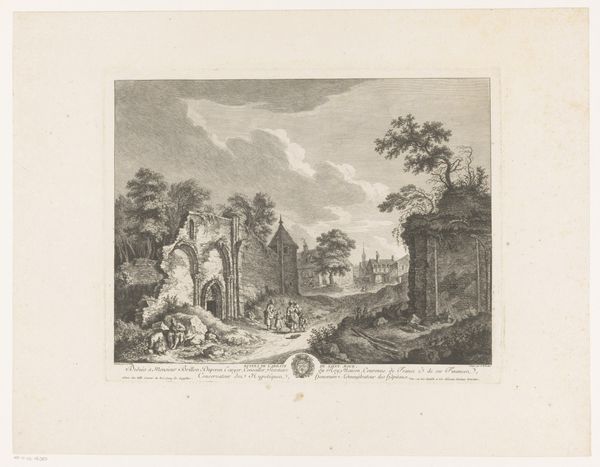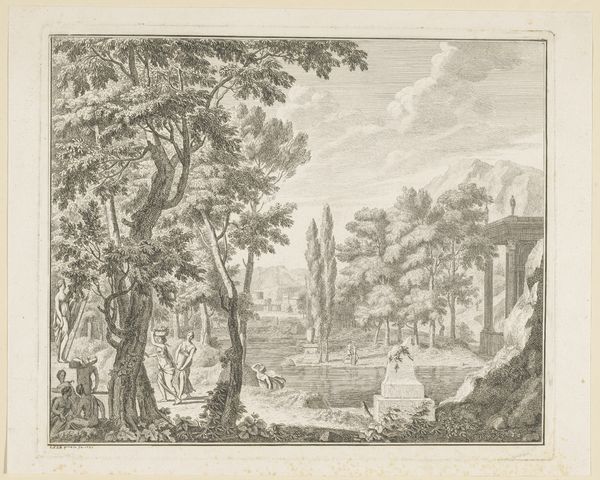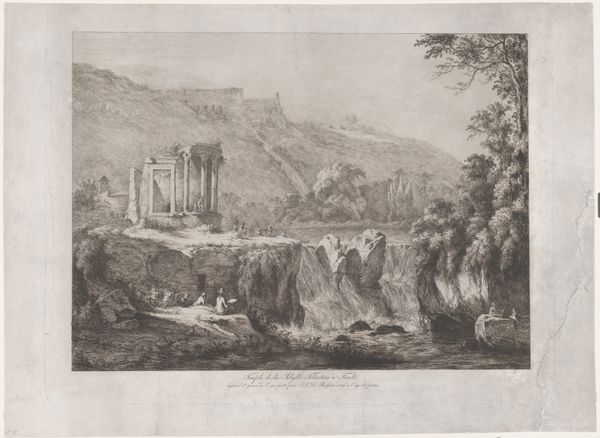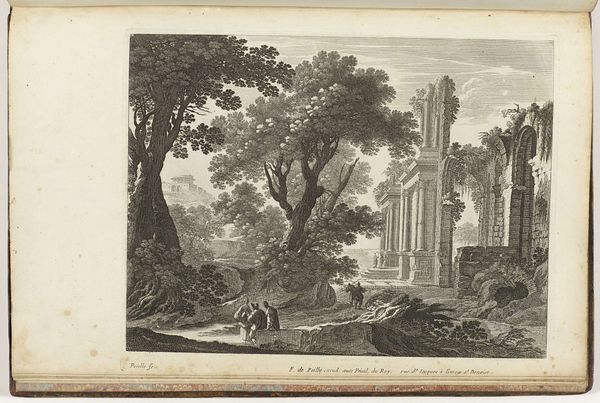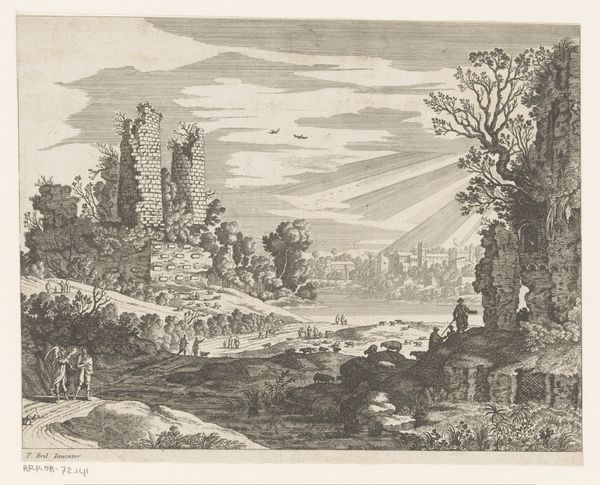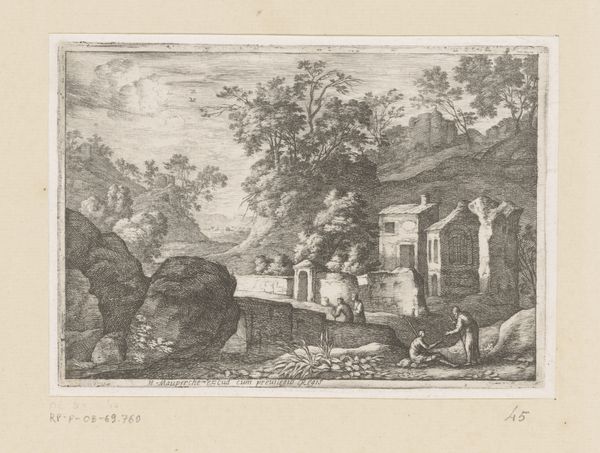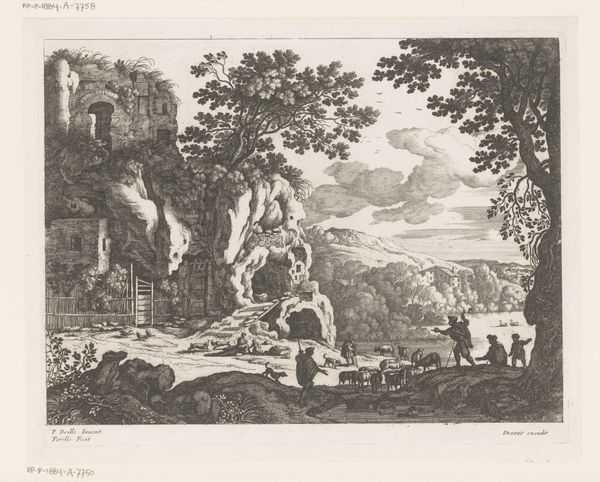
drawing, print, etching, engraving
#
drawing
#
baroque
# print
#
etching
#
landscape
#
figuration
#
cityscape
#
history-painting
#
engraving
Dimensions: sheet: 9 9/16 x 12 3/8 in. (24.3 x 31.4 cm)
Copyright: Public Domain
Editor: Here we have Gabriel Perrelle’s etching "Travelers Visiting Ruins," likely made sometime between 1603 and 1677. The linework creates a powerful contrast, and I am really drawn to the juxtaposition of the enduring architectural forms with the seeming fragility of the human figures. How might you interpret Perrelle’s interest in these ruins? Curator: I see this piece as speaking to the social context of artistic production. Prints like this were commodities, made using specific materials and labor processes for a growing market. Consider the accessibility of prints versus unique paintings for those 'travelers' depicted, maybe aspiring to higher social strata through aesthetic appreciation of history. How does the method of printmaking itself, a repeatable process, inform its meaning in relation to these 'ruins' and perhaps, ideas about a 'lost' classical period, as they understood it? Editor: So, you're suggesting the very act of creating multiple, reproducible images using engraving is significant? That this speaks to more than just depicting history? Curator: Exactly. We need to consider the etcher's tools, the paper, the ink, the market for these images. These ruins weren’t simply aesthetic subjects; they were being repackaged, consumed, and disseminated through the burgeoning print market, changing our relationship to history, or perhaps more accurately, commodifying it. What do you make of the contrast between the detailed ruins and relatively simple rendering of the travelers? Editor: Perhaps the focus wasn't really the people; they simply helped contextualize the grandeur—and the implied market—of the ruins themselves? The production process itself almost mirrors the decay it depicts: a controlled destruction, creating an entirely new product in its wake. Curator: Precisely. The materials and methods tell us as much, if not more, than the ostensible subject matter. Considering it this way helps move beyond a simple art historical appreciation and into social and economic spheres. Editor: That’s fascinating; I had not considered the economic context of printmaking so directly. Thank you! Curator: And thank you; considering your insights helps us broaden our interpretation of historical context beyond the art itself.
Comments
No comments
Be the first to comment and join the conversation on the ultimate creative platform.
